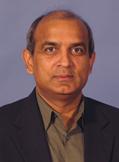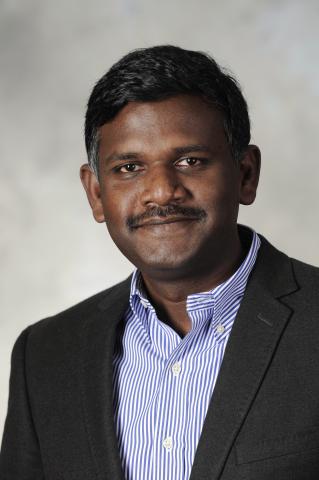ECE's Raghupathy Sivakumar and Sudhakar Yalamanchili will join the IEEE Fellows class of 2014, effective January 1, 2014.
Two faculty members in the School of Electrical and Computer Engineering (ECE) at the Georgia Institute of Technology have been elevated to Fellow status by the Institute of Electrical and Electronics Engineers (IEEE). Chosen by the IEEE board of directors, Raghupathy Sivakumar and Sudhakar Yalamanchili will join the IEEE Fellows class of 2014, effective January 1, 2014.
IEEE is the world's leading professional association for the advancement of technology, and the IEEE grade of Fellow is conferred upon a person with an extraordinary record of accomplishments in any of the IEEE fields of interest. It is one of the highest honors that can be bestowed on an individual by the Institute.
Raghupathy Sivakumar, Ken Byers Professor in the School of ECE, received his IEEE Fellow citation "for contributions to the design of algorithms and protocols for wireless networking and mobile computing."
Dr. Sivakumar joined the Georgia Tech ECE faculty in 2000, where he leads the Georgia Tech Networks and Mobile Computing Research Group. He and his current team of six graduate students develop algorithms and protocols for next generation wireless networks and mobile computing, which span the network protocol stack from the link-layer all the way up to the application layer. His key research contributions have included algorithms for multi-path transport protocols, smart antenna based networking, wireless sensor and ad-hoc networks, and ultra-mobile computing. Dr. Sivakumar’s work has led to the founding of two venture-funded technology startups: Asankya, Inc. and StarMobile, Inc.
Sudhakar Yalamanchili, Joseph M. Pettit Professor of Computer Engineering in the School of ECE, was promoted to Fellow "for contributions to high-performance multiprocessor architecture and communication."
Dr. Yalamanchili’s early distinctive contributions dealt with the design and analysis of reliable, high performance multiprocessor interconnection networks followed by architectural optimizations for power and time efficient multiprocessor communication. His subsequent contributions are related to the development of microarchitecture and compilation optimizations for heterogeneous computer architectures motivated primarily by the challenges of efficient processing of massive, unstructured data sets. He joined the faculty of ECE in 1989.
Additional Images

